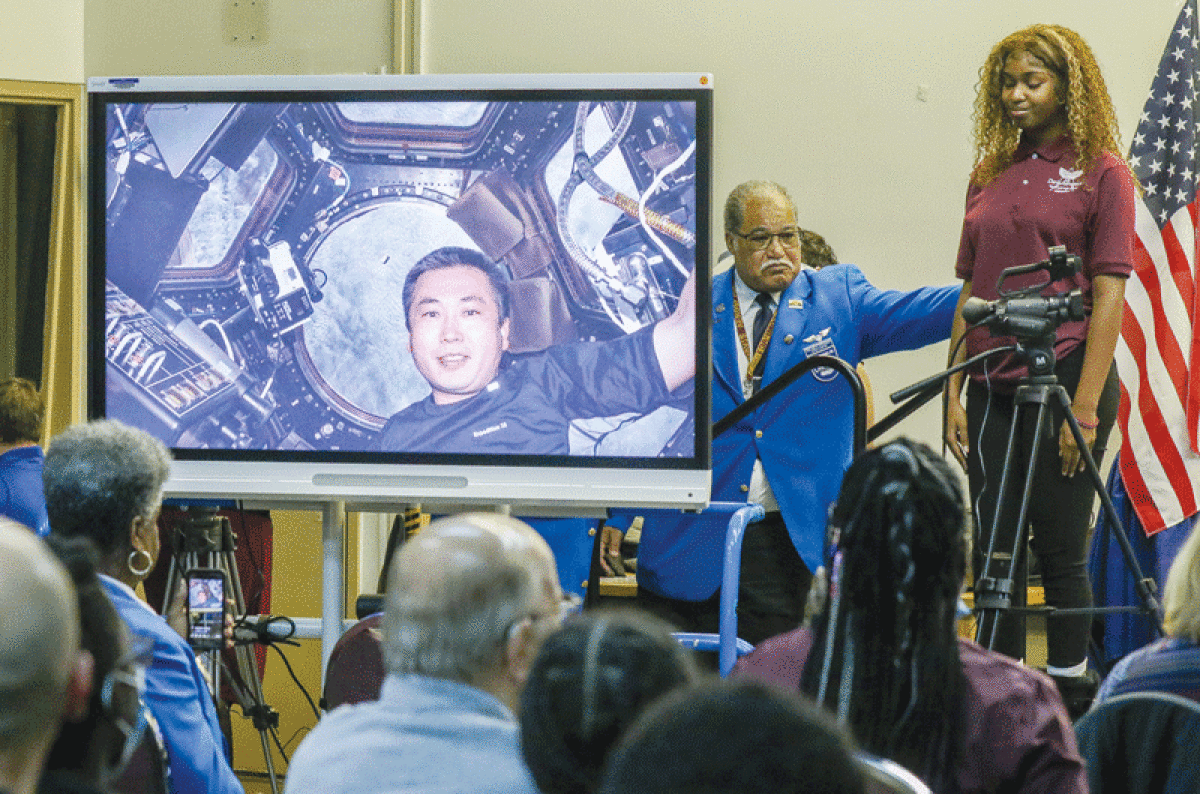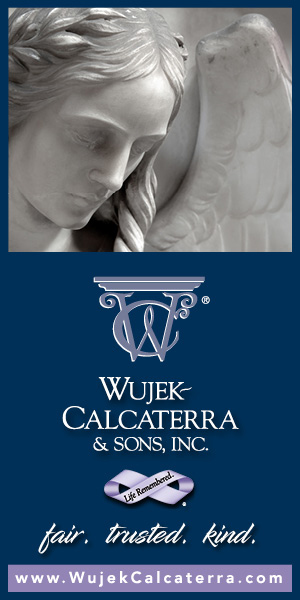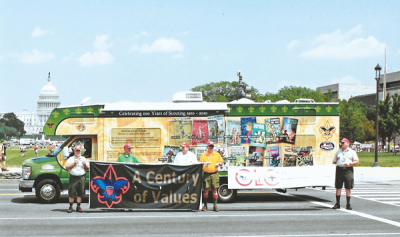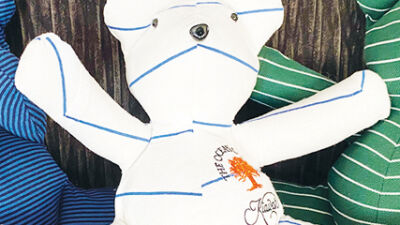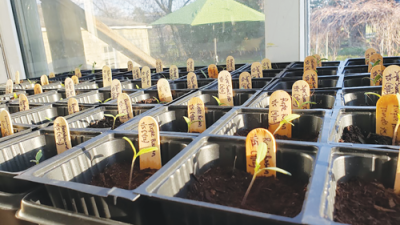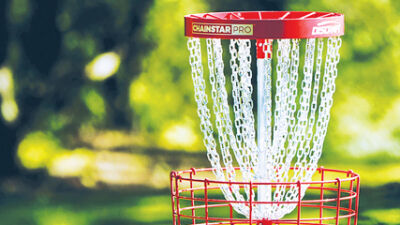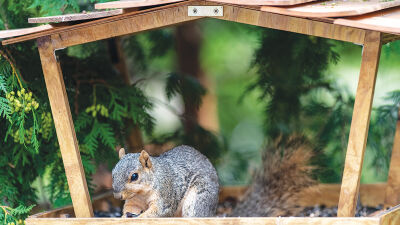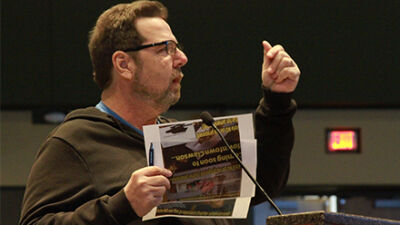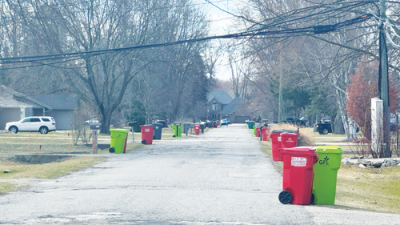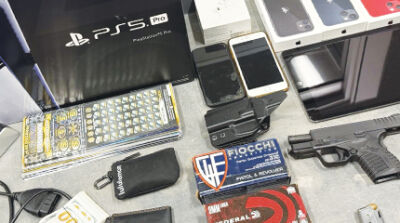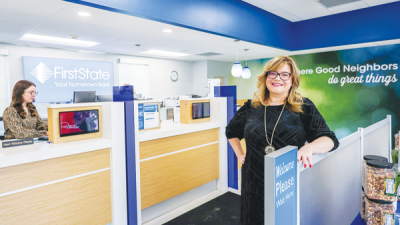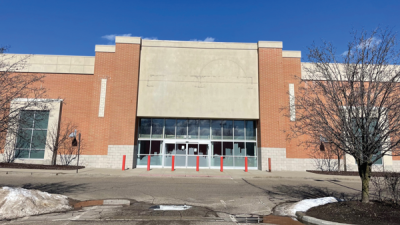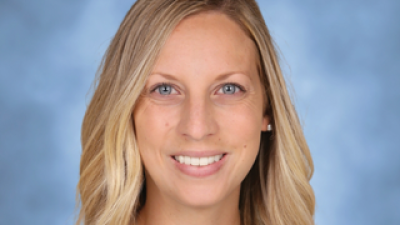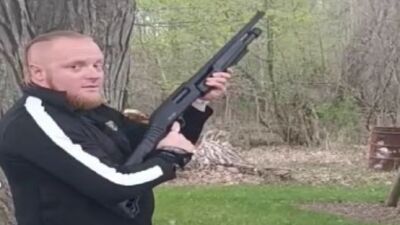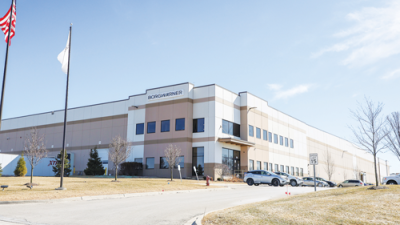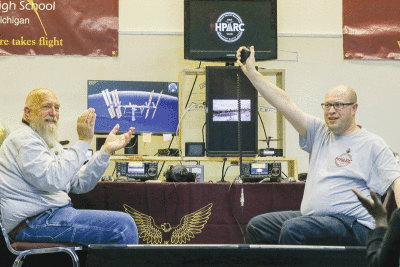
Hazel Park Amateur Radio Club members Michael Slupinski, of Warren, left, and Michael Phipps, of Hazel Park, right, connect with Japanese astronaut Koichi Wakata.
Photo by Patricia O’Blenes
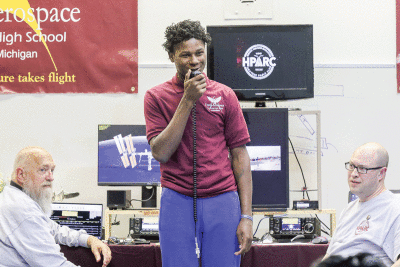
Benjamin O. Davis Aerospace Technical High School 10th grader Derek Butler asks Japanese astronaut Koichi Wakata a question.
Photo by Patricia O’Blenes
METRO DETROIT — “Davis Aerospace Technical High School. Welcome aboard the International Space Station. We are looking forward to answering your questions. Over.”
That was the greeting from Japan Aerospace Exploration Agency (JAXA) astronaut Koichi Wakata while talking to the students from space aboard the ISS as it orbited the earth Oct. 18.
Wakata, a Japanese engineer and veteran of several NASA space shuttle missions, communicated with a group of Benjamin O. Davis aerospace students during a 10-minute conversation that began at approximately 1:30 p.m. Eastern Standard Time. Just over a dozen students asked Wakata one question.
Several Detroit Public Schools Community District employees attended the event, as did members of the Tuskegee Airmen Detroit Chapter. The Tuskegee Airmen were the first Black military pilots who fought in World War II. Some of the veterans present serve on the Benjamin O. Davis Aerospace Technical Advisory Committee.
The event was coordinated with help from the Hazel Park Amateur Radio Club. Club members — including Michael Slupinski, of Warren, and Michael Phipps, of Hazel Park — set up their ham radio equipment inside the media center to connect with Wakata. Two computer monitors displayed a photo of the ISS and Wakata as he interacted with the students.
“We are really happy to hear you,” Phipps told Wakata as the conversation began. “Be prepared for third-party traffic.”
The contact with the ISS was part of the Amateur Radio on International Space Station (ARISS) program. Davis was one of eight schools selected across the country to interact with the ISS this fall. The high school was named after Benjamin O. Davis Jr., the first Black general in the U.S. Air Force.
The visit with Wakata was designed to engage the students in science, technology, engineering, arts and mathematics (STEAM) activities. The program also raises awareness of space and radio communications, space exploration and career possibilities.
Wakata answered questions about lightning, power supplies and toxins in space, among other inquiries. At the end of each answer, Wakata said “over.”
“We orbit the earth about every 90 minutes. We have been conducting a lot of observations and photographing that continue the studies about lightning. Some of those photos identify that the lightning goes up from the clouds toward space,” Wakata said. “We have equipment for the Space Station to scrub toxins, odors and other household (inaudible) on the ISS. We have an excellent system.”
Another question was, “What does it feel like when you take off in the rocket?”
“It feels so exciting,” the astronaut said, adding his last launch was “under Crew Dragon. The Crew Dragon launch was very smooth. All the way to the (inaudible) was a smooth ride.”
Wakata explained how the astronauts get their “cup of joe” in space.
“We make oxygen from water for a recycled system. The water itself is recycled from urine and sweat. We turn yesterday’s coffee into tomorrow’s coffee,” Wakata said, which drew a chuckle from the crowd. “If decompression occurs we have to first isolate the module that has the leak in it by closing the hatch. If the leak is small enough we will go back to the leaking compartment and use materials to stop the leak if possible.”
Several guests addressed the students during the event including Davis Principal Neal Morrison; district Assistant Superintendent of Operations Machion Jackson; Dana Hughes, the district’s executive director, office of college and career readiness; Davis Assistant Principal Sybil Love; and Hazel Park Amateur Radio Club member Joe Raznik. Davis math teacher Janine Scott and NASA Chief of Public Engagement Cindy Steele, a 1986 graduate of Cass Technical High School in Detroit, offered encouragement to the students about their studies.
Last Tuesday, it was announced that ARISS-USA volunteer and mentor Larry Koziel died in August and a moment of silence was held in his honor. According to ARISS mentor Gordon Scannell, Koziel worked hard to make the Davis-Wakata connection happen.
Retired Tuskegee Airmen Lt. Col. Lawrence A. Millben presented each student with a patch from the ISS.
“If you notice around the edge of the patch, there are all the countries flags that have anything to do with the International Space Station,” Millben said.
Davis senior Markus Jones, who has already obtained his commercial drone license, shared his experience about the school, which is near the Coleman A. Young International Airport. Jones said when he first came to Davis in ninth grade, the students would visit the airport, which was then called Detroit City Airport.
“Every day seeing planes land, learning new stuff…about engines and landing gear,” he said. “I’m most grateful for the experience and the people.”
Jones plans to attend Western Michigan University “to attend their private pilots courses.”
At the end of the presentation, retired Tuskegee Airmen Chief Master Sgt. Bill Welborne gave each student Tuskegee Airmen quarters.
“You can’t find them now,” he told the students. “This is a keepsake.”
Each student also received a Tuskegee Airmen dog tag from Welborne.
The Hazel Park Amateur Radio Club is always looking for new members. To operate an amateur radio, also known as ham radio, you need a license from the Federal Communications Commission. Ham radio operators can communicate with others around the world or closeby without using the internet or cellphones. For more information, visit HPARC.org.
 Publication select ▼
Publication select ▼